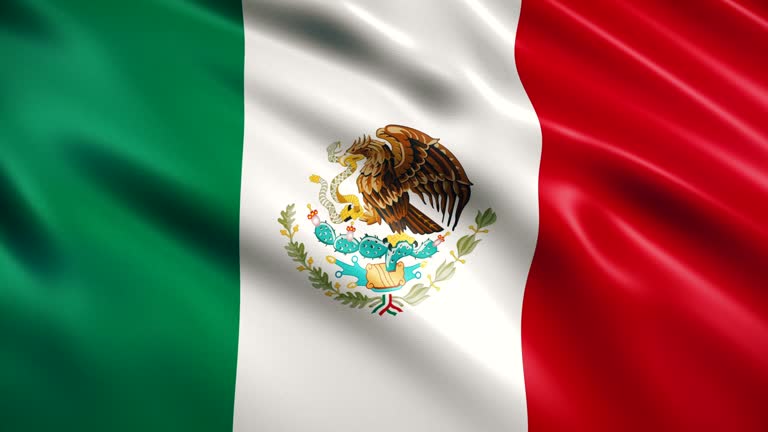For e-commerce sellers in Mexico, dealing with currency volatility is a growing concern. The peso’s fluctuations can reduce profit margins, especially for merchants dealing in USD but settling in local currency. To overcome this, forward-thinking sellers are now using USDC stablecoins to hedge against devaluation and streamline cross-border sales. This case study explores how one Mexican e-commerce business uses TransFi to convert online sales into USDC, protecting income from peso depreciation and FX risk.
Understanding Currency Risk for Mexican E-Commerce Sellers
The Mexican peso (MXN) has historically been one of the more volatile emerging market currencies. For e-commerce merchants selling to U.S. or international customers, this volatility poses serious risks:
- Delayed settlements mean a weakening peso can reduce the final value of sales.
- Bank fees and poor FX rates eat into margins.
- USD-invoiced marketplaces (e.g., Amazon, Etsy) often pay out in pesos, subjecting sellers to conversion losses.
As global e-commerce grows in Mexico, so does the need for digital dollar solutions—and that’s where stablecoins like USDC come into play.
What Are Stablecoins and Why Are They Useful for E-Commerce?
Stablecoins like USDC (USD Coin) are cryptocurrencies pegged 1:1 to the U.S. dollar. They provide all the benefits of blockchain—speed, low fees, global access—without the volatility of traditional crypto assets.
For Mexican e-commerce businesses, converting income to USDC means:
- Protecting earnings against peso devaluation
- Faster access to global markets
- Lower payment processing fees
- Holding funds in a digital dollar until conversion is optimal
By partnering with platforms like TransFi, sellers can move in and out of stablecoins seamlessly, staying ahead of market shifts.
Mexico’s Regulatory Climate: Stablecoins Are Welcome, With Oversight
Mexico has established a regulatory framework that classifies stablecoins as digital assets, not legal tender, but not banned. Financial authorities like the Comisión Nacional Bancaria y de Valores (CNBV) oversee fintech operations, while the Ley Fintech ensures that licensed platforms operate transparently.
Key regulations relevant to stablecoin use in Mexico:
- Merchants must declare crypto income for tax purposes.
- Platforms like TransFi work with regulated partners to ensure compliance.
- There’s no ban on holding or converting stablecoins for commercial use.
With regulatory alignment improving and fintech innovation rising, Mexico is quickly becoming a hotbed for stablecoin adoption in LATAM.
Case Study: Alejandro, a Shopify Seller in Guadalajara
Alejandro runs a successful online fashion store in Guadalajara, selling to customers across North America. His store is hosted on Shopify, and most of his customers pay in USD. But Alejandro's bank account is in pesos, and every payout involved a 4-6% FX loss, plus delayed deposits that took 3–5 days.
The TransFi Solution:
Alejandro integrated TransFi to automatically convert Shopify payouts to USDC. Instead of waiting days to receive funds in pesos, he now:
- Receives USDC directly to a digital wallet
- Holds or converts funds based on market timing
- Withdraws in pesos when needed using TransFi’s on-ramp partners
Business Benefits of Using TransFi and USDC
By converting his e-commerce income to USDC using TransFi, Alejandro realized immediate improvements:
Financial Stability
His revenue is protected from daily MXN/USD fluctuations. If the peso weakens, his earnings remain in digital dollars until he decides to convert.
Faster Settlement
What used to take up to 5 days now takes under 30 minutes—enabling better cash flow and inventory planning.
Better Margins
Alejandro saves on bank and FX fees, keeping more of each sale and reinvesting in his business.
Transparent Reporting
Through TransFi’s dashboard, Alejandro can track every transaction, download statements, and stay audit-ready.
How TransFi Works for Mexican Merchants
TransFi offers a simple, plug-and-play system that enables Mexican e-commerce sellers to accept USD payments and convert them to USDC, then cash out in pesos whenever needed.
Core Features:
- Multi-currency wallet for USDC/USDT storage
- Automated payouts from platforms like Shopify or Stripe
- Real-time conversion and low-cost off-ramps to MXN
- KYC-compliant onboarding with local partners
This solution is ideal for:
- Shopify and WooCommerce store owners
- Etsy, Amazon, or eBay merchants in Mexico
- Freelancers selling digital goods or services online
- Dropshippers and cross-border e-commerce brands
Challenges & Considerations
Despite clear benefits, stablecoin adoption isn’t without challenges:
- Consumer awareness of stablecoin tools remains low
- Some banks still block crypto-related transfers
- Regulatory clarity around stablecoin tax reporting is evolving
- Price stability depends on trusted providers (e.g., USDC is considered safer than algorithmic stablecoins)
Still, platforms like TransFi are working closely with regulators and integrating fiat rails to ensure ease of use and compliance across LATAM.
The Future of Stablecoin Adoption in Mexican E-Commerce
Mexico is becoming a model for crypto-fintech integration in Latin America, and e-commerce is leading the charge.
Here’s what we can expect in the next few years:
- Wider adoption of USDC and USDT for online retail payments
- More merchants integrating stablecoin APIs into checkout and payment dashboards
- Improved fiat-to-stablecoin on/off ramps via wallets, fintechs, and neobanks
- Regulatory green lights encouraging institutional adoption
With a growing base of tech-savvy sellers and rising global demand, Mexico is poised to become a major player in stablecoin-powered commerce.
Also read: Case Study: A Small Business in Turkey Switches to Paying Contractors in USDT via TransFi
Conclusion
E-commerce sellers in Mexico are increasingly turning to stablecoins like USDC to guard against currency devaluation and gain better financial control. Through TransFi’s seamless integration, Alejandro and others like him are converting online sales into digital dollars, reducing FX risk, and improving profitability.
For businesses selling cross-border or accepting payments in USD, TransFi offers a future-ready financial toolset that combines compliance, speed, and protection—bringing true digital dollar stability to Latin America’s fast-growing e-commerce economy.
FAQs
Can Mexican businesses legally use stablecoins like USDC?
Yes. While not legal tender, stablecoins are permitted under fintech regulation. Businesses must ensure tax compliance and use licensed platforms like TransFi.
How does TransFi help with currency conversion?
TransFi enables businesses to receive sales proceeds in USDC and convert them to pesos when desired, reducing FX exposure.
Is there a fee to convert sales to stablecoins?
Yes, but the fee is minimal compared to traditional banking fees. TransFi also offers competitive FX rates.
Which stablecoins are best for Mexican e-commerce?
USDC and USDT are the most widely adopted, offering high liquidity and USD parity.
Can I integrate TransFi with Shopify or other platforms?
Yes. TransFi supports API-based integrations and works with popular platforms to streamline payouts and conversions.
Daftar Isi
Artikel yang Disarankan
Jelajahi produk kami

Lakukan pembayaran global dengan kecepatan klik

Terima pembayaran, hapus batas.

Buka Transaksi Mata Uang Digital yang Mulus Di Mana Saja









.png)














